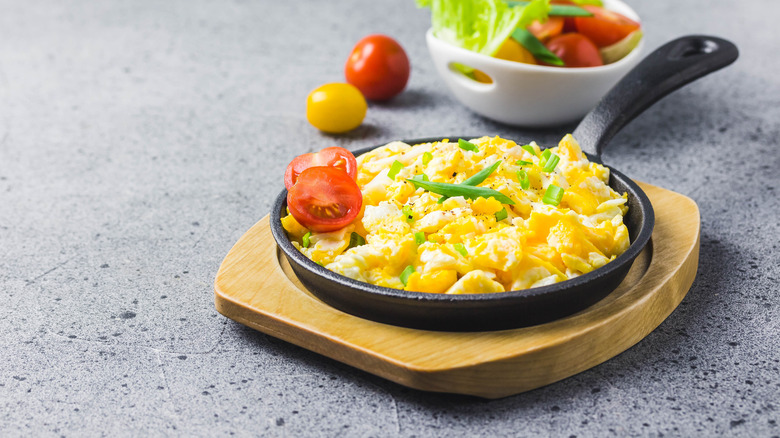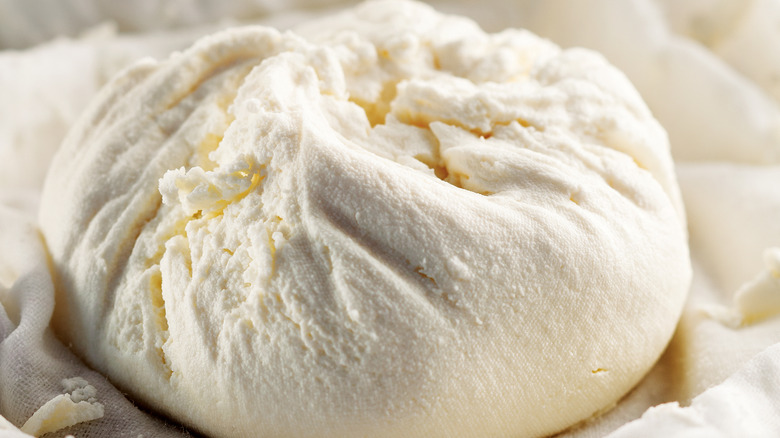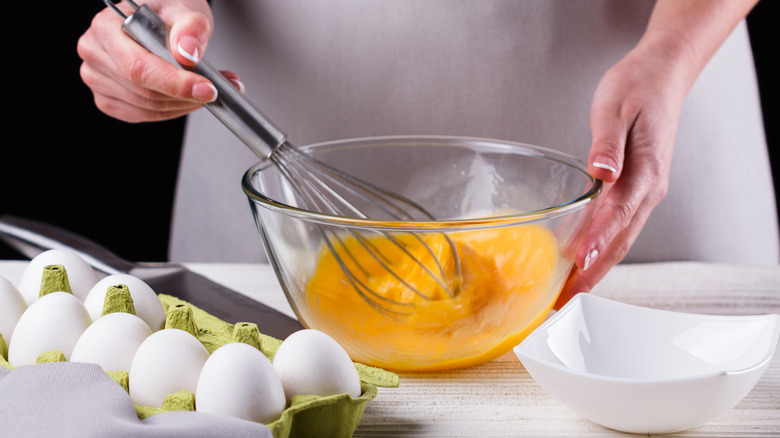Ricotta Is The Secret To Elevated, Creamy Scrambled Eggs
Home cooks who take the time to make perfect scrambled eggs know that, for a dish with so few moving parts, the result can be a fluffy, eggy dream. While there are many potential herb, veggie, and cheese add-ins to a batch of scrambled eggs, none will contribute to their creaminess quite like adding fresh ricotta cheese. Nothing else you can dice or grate can impart such light fluffiness; it's a matter of science.
Why? Ricotta is peculiarly creamy, incredibly soft, and ever-so-slightly sweet. When folded until scarcely incorporated into a pan of just-set scrambled eggs (off heat, naturally), what winds up on the waiting plate (or pieces of toast) is a dish that's almost like a vanilla soufflé in softness, created in a fraction of the time with none of the will-it-fall anxiety. Other scrambled egg additives will only weigh things down; ricotta will always accentuate the fluffy aspect.
What is ricotta cheese?
What is ricotta cheese? For one thing, it's ancient, dating back to at least the Roman Republic — if not before — and believed to have originated near the Italian mainland on the island of Sicily. Its name means "recooked" in Italian because ricotta is made from the leftover whey (along with a few curds) from the processing of other cheeses. (Whey is the liquid that separates from the milk's fatty solids, or curds, through a process known as curdling.) Frugal Sicilians reheated the whey to nearly boiling with fresh milk and a coagulant like vinegar or lemon juice.
Then, leftover proteins in the whey formed curds that, alongside the new curds formed by the milk, resulted in impossibly creamy ricotta. For this reason, it's known as a "whey cheese." If you want to get technical, ricotta is not a cheese; it's a by-product the Italians call a latticino. Regardless, ricotta might be the most glorious expression of waste not, want not that ever existed.
The science behind combining ricotta and eggs
Here is where the scientific aspect of combining eggs and ricotta comes into play. The milk proteins that form curds are called casein. Since whey is a protein, ricotta is texturally different from other cheeses, such as mozzarella. (It's also why whey has often been turned back into feed for the very cows who so kindly provided the milk to make the cheese in the first place.) The ricotta made primarily from whey protein tends to be soft, creamy, and not shelf-stable.
The fluffiness of a good batch of scrambled eggs is also derived from proteins. In this case, those found in the albumen, also known as the egg white. Whipping air into the eggs with a whisk causes these proteins to unfold in a process known as denaturing. The air bubbles are then incorporated into a foam, structured by the lengthened, denatured protein strands. This is all a complicated way of saying fluffy. Knowing all this, you can imagine the creamy delight of ricotta cheese folded into scrambled eggs — and if not, you better whip up a batch yourself to find out.


